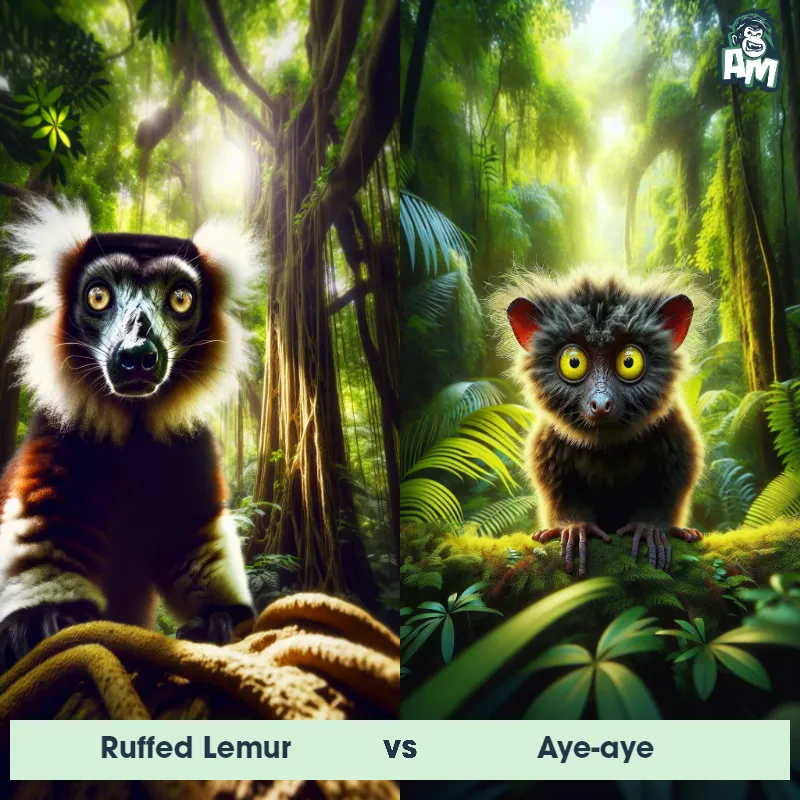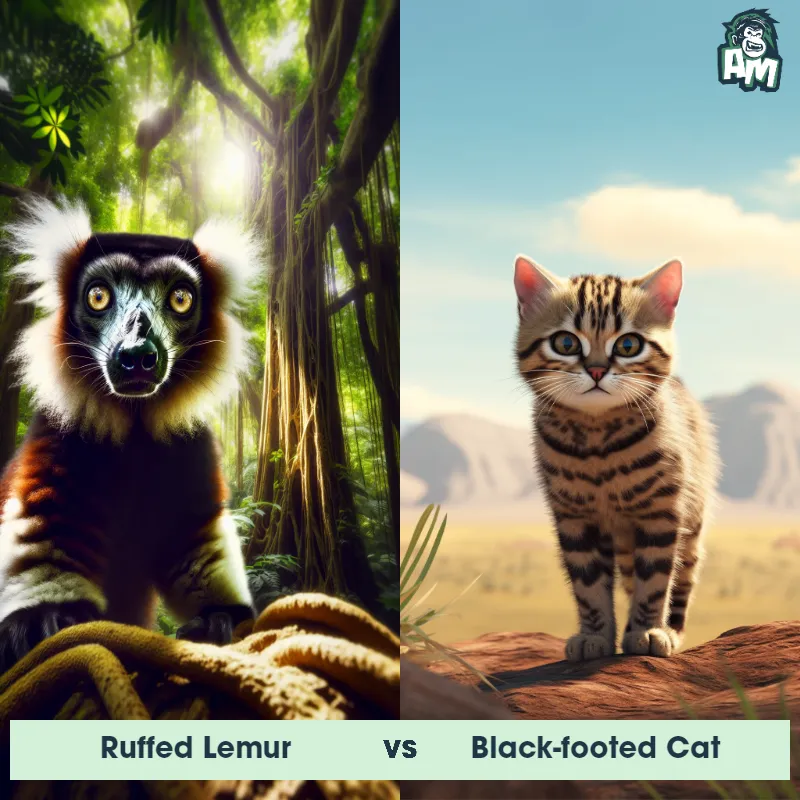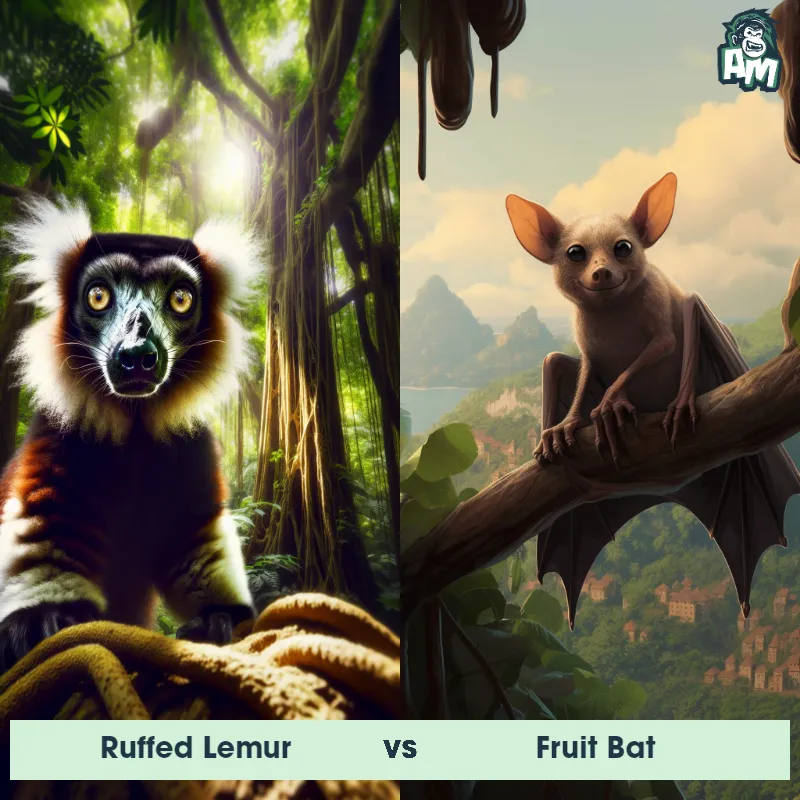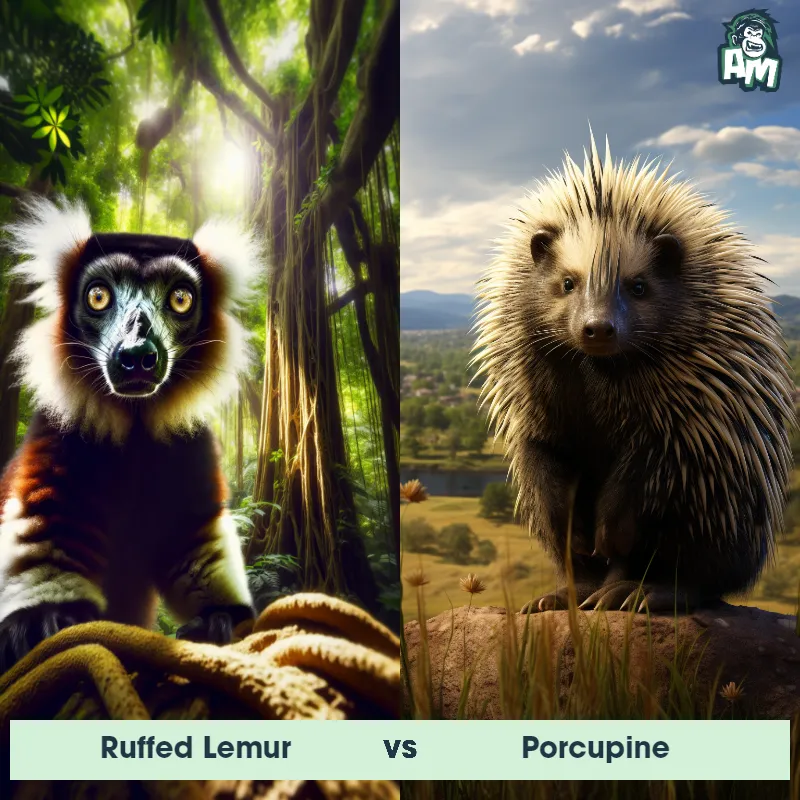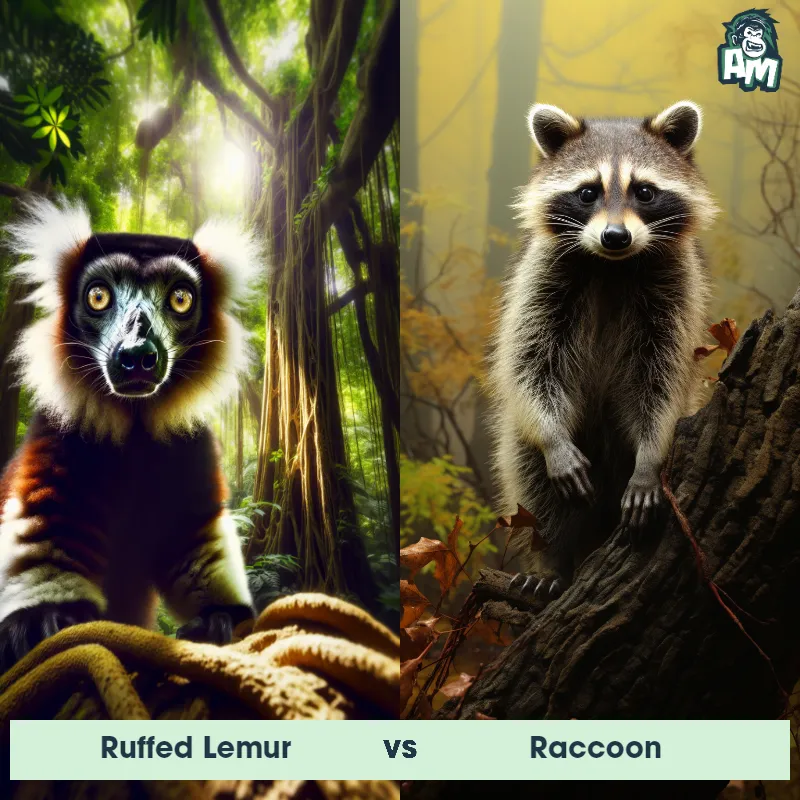The Ruffed Lemur
The Ruffed Lemur, also known as Varecia, is a large primate native to the island of Madagascar. They are easily recognized by their striking black and white fur, with a rough mane around their face. They have a long tail, measuring about as long as their body, which helps them maintain balance while leaping through the trees. Ruffed Lemurs have a loud and distinctive call, which they use to communicate with other members of their group. They are herbivores and primarily feed on fruits, leaves, and flowers.

| Ruffed Lemur | |
|---|---|
| Size | Approximately 3 feet (0.9 meters) |
| Weight | 6-10 pounds (2.7-4.5 kilograms) |
| Speed | 12mph (19km/h) |
| Key Strength | Agility and climbing skills |
| Biggest Weakness | Lack of physical strength |
| Scientific Name | Varecia variegata |
| Family | Lemuridae |
| Habitat | Rainforests |
| Geography | Madagascar |
| Diet | Fruits, leaves, nectar, and flowers |
| Lifespan | 16 years - 20 years |

The Ruffed Lemur
The Ruffed Lemur, also known as Varecia, is a large primate native to the island of Madagascar. They are easily recognized by their striking black and white fur, with a rough mane around their face. They have a long tail, measuring about as long as their body, which helps them maintain balance while leaping through the trees. Ruffed Lemurs have a loud and distinctive call, which they use to communicate with other members of their group. They are herbivores and primarily feed on fruits, leaves, and flowers.
Fun Fact: Ruffed Lemurs are one of the most vocal primates, with their loud calls being heard up to one mile away, allowing them to effectively communicate within their group and establish territories.
| Ruffed Lemur | |
|---|---|
| Size | Approximately 3 feet (0.9 meters) |
| Weight | 6-10 pounds (2.7-4.5 kilograms) |
| Speed | 12mph (19km/h) |
| Key Strength | Agility and climbing skills |
| Biggest Weakness | Lack of physical strength |
| Scientific Name | Varecia variegata |
| Family | Lemuridae |
| Habitat | Rainforests |
| Geography | Madagascar |
| Diet | Fruits, leaves, nectar, and flowers |
| Lifespan | 16 years - 20 years |
Ruffed Lemur Matchups
We use AI to simulate matchups between the Ruffed Lemur and other animals. Our simulation considers size, strength, and natural predatory behaviors to determine the most likely outcome.

Can't find the Matchup you want?
Create Your Own MatchupRuffed Lemur: Diet, Predators, Aggression, and Defensive Behaviors
What do Ruffed Lemurs eat?
Ruffed Lemurs are primarily frugivores, meaning they mainly eat fruits such as figs, mangoes, and bananas. They also supplement their diet with leaves, flowers, seeds, and occasionally insects. Their varied diet helps provide them with essential nutrients for their well-being.
Do Ruffed Lemurs have any predators?
Yes, Ruffed Lemurs have predators in their natural habitat. Some of their main predators include fossas, a type of carnivorous mammal native to Madagascar, as well as birds of prey such as the Madagascar Harrier. In addition to natural predators, Ruffed Lemurs also face threats from deforestation and habitat loss due to human activities.
Are Ruffed Lemurs aggressive?
Ruffed Lemurs are not known to be particularly aggressive towards each other or other animals. They are social creatures that live in small family groups within their forest habitats. However, they may show aggression towards rivals or intruders during mating seasons or territorial disputes.
Do Ruffed Lemurs fight?
While Ruffed Lemurs may engage in fights with rivals or intruders, physical fights are not their primary way of resolving conflicts. They are more likely to use vocalizations, body language, and scent marking to communicate and establish dominance within their social groups.
How do Ruffed Lemurs defend themselves?
Ruffed Lemurs have several ways to defend themselves against predators or threats. They have keen senses of hearing and smell, which help them detect danger early on. They are also agile climbers and can escape into the treetops to avoid predators. If needed, they may emit loud alarm calls or use their sharp teeth and nails to defend themselves.
What is the Ruffed Lemur's biggest weakness in a fight?
Despite their agility and sharp teeth, Ruffed Lemurs are relatively small and may be overpowered by larger predators such as fossas. They rely more on evasion and vocalizations rather than physical confrontation when faced with a serious threat. Additionally, habitat loss and human activities pose a significant threat to their survival compared to natural predators.
Fun Fact: Unlike most primates, Ruffed Lemurs have an unusual way of grooming themselves – they use their second-to-last toe to clean their ears, ensuring they stay clean and free from debris.
Fun Fact: Ruffed Lemurs are very agile and acrobatic, capable of leaping up to 30 feet from tree to tree, using their strong legs and long tail for balance and propulsion. Their leaping ability allows them to easily navigate their forest habitat and escape from potential predators.



